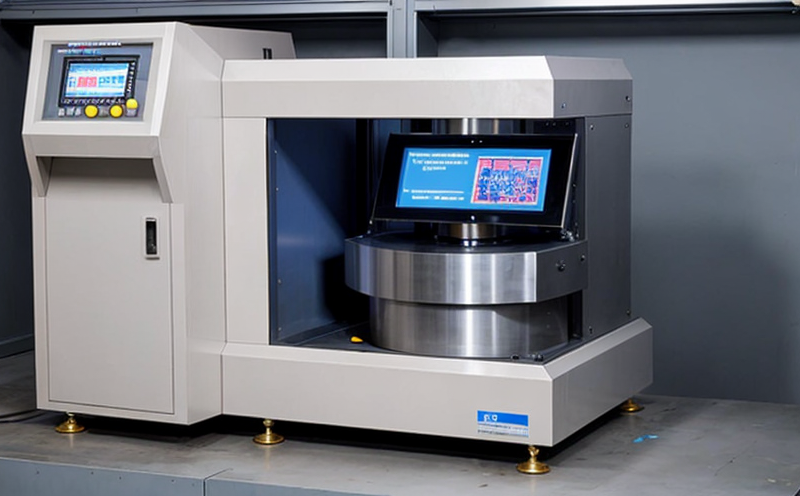ISO 5459 Geometric Tolerance Datums Testing
In additive manufacturing (AM) and three-dimensional printing (3DP), achieving precise dimensional accuracy is crucial for the success of any production. The ISO 5459 standard provides a robust framework to ensure that manufactured parts meet their geometric tolerance requirements as specified in engineering drawings. This service focuses specifically on testing the conformity of components to the geometric tolerances defined by ISO 5459.
The test involves the use of advanced metrology equipment to measure the actual dimensions and positions of features on a part, comparing them against the nominal values provided in the design documentation. The aim is to verify that all critical dimensions fall within acceptable limits as defined by the standard. This process ensures not only compliance with industry standards but also enhances product quality and reliability.
The testing procedure typically begins with careful preparation of the specimen, which may involve cleaning or marking key reference points before placing it into a measurement setup. Various types of coordinate measuring machines (CMMs), laser scanners, or similar devices are used depending on the complexity of the part being tested. Once positioned correctly, multiple scans are taken from different angles to capture all relevant geometric features accurately.
After acquiring raw data through these measurements, it is then analyzed using specialized software that compares results against specified tolerances outlined in ISO 5459. Any discrepancies between measured values and expected outcomes are documented alongside detailed explanations of potential causes such as manufacturing process variations or material properties affecting accuracy.
| Application Area | Description |
|---|---|
| Automotive Manufacturing | The automotive sector relies heavily on precise geometries for engine components, suspension systems, and body structures. Ensuring these parts fit together correctly requires rigorous geometric tolerance testing. |
| Aerospace & Defense | Components used in aircraft engines or spacecraft require extremely tight tolerances to function safely under extreme conditions. Testing ensures that every piece adheres strictly to design specifications. |
| Medical Devices | In medical devices, especially those implanted into the human body, even minor deviations from intended shapes can lead to significant health issues. Therefore, accurate geometric tolerance testing is essential here too. |
- Ensures adherence to international standards like ISO 5459
- Promotes consistent quality across manufacturing processes
- Aids in identifying sources of variation during production
- Supports continuous improvement initiatives within organizations
The significance of this testing cannot be overstated, particularly given the increasing complexity and precision demanded by modern manufacturing techniques. By adhering to strict geometric tolerance standards, manufacturers can avoid costly rework or scrap, reduce warranty claims, and build customer trust.
Why It Matters
Accurate geometric tolerancing is paramount in ensuring that parts manufactured via AM and 3DP align properly with their intended functions. Non-compliance can result in structural failures, reduced performance, or complete malfunction of end products. For instance, if an engine component does not fit correctly due to dimensional inaccuracies, it could cause catastrophic failure during operation.
In addition to safety concerns, non-conformance also leads to increased costs associated with repairs, replacements, and potential recalls. Such incidents can severely damage a company’s reputation and financial stability. By leveraging ISO 5459 geometric tolerance datums testing, businesses demonstrate their commitment to quality assurance and regulatory compliance.
Furthermore, consistent adherence to these standards fosters innovation by allowing companies to push boundaries while maintaining reliability. As technology advances, so too does the ability to create more intricate designs with fewer tradeoffs regarding accuracy. Testing against established criteria helps maintain a balance between creativity and practicality.
Industry Applications
- Aerospace & Defense
- Automotive Manufacturing
- Medical Devices
- Consumer Electronics
These industries demand high levels of precision in their components, making ISO 5459 geometric tolerance datums testing indispensable. By ensuring that parts meet the necessary tolerances, these sectors can enhance product performance and safety while minimizing risks associated with improper fit or function.
International Acceptance and Recognition
- Adopted by numerous countries as a benchmark for manufacturing precision
- Incorporated into national standards like ASME Y14.5M in the U.S.
- Used globally by OEMs, suppliers, and regulatory bodies
The widespread adoption of ISO 5459 reflects its importance in setting industry-wide benchmarks for geometric tolerance testing. Its international recognition underscores the value placed on consistent quality standards across borders. This global acceptance ensures that manufacturers operating internationally can rely on uniform criteria when conducting tests.





